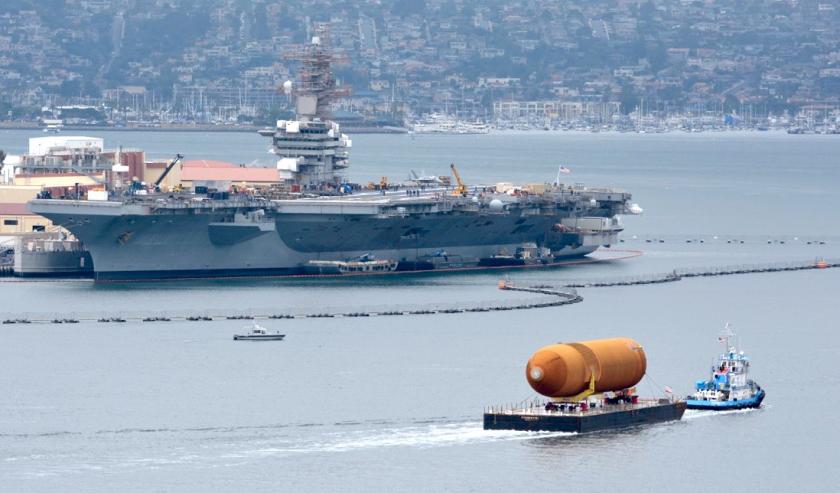NASA’s Michoud Assembly Facility (MAF) in New Orleans has been building spacecraft components for decades, helping lay the foundation for the Journey to Mars. Today, this advanced manufacturing facility is where engineers are building the massive core stage of NASA’s Space Launch System (SLS) rocket, which will store cryogenic liquid hydrogen and liquid oxygen to feed the vehicle’s four RS-25 engines. Previously, the space shuttle external tanks were manufactured at MAF. The last tank, ET-94, recently embarked on its final mission to commemorate past achievements in space, to educate, and inspire future generations of explorers as part of a permanent shuttle exhibit at the California Science Center in Los Angeles.

The tank left MAF on a barge Tuesday, April 12, and will arrive at the California Science Center Wednesday, May 19. With the addition of ET-94, the California Science Center’s Samuel Oschin Air and Space Center will be the only place in the world to view a complete shuttle stack in launch configuration.
“We are elated to have ET-94 at the California Science Center to inspire future generations of explorers with a means of reaching beyond our current limits and opening new doors of discovery from the unique vantage point of space,” said John Honeycutt, former external tank manager and current program manager for NASA’s Space Launch System. “NASA is embarking on its next step in space exploration with the Space Launch System, the new launch vehicle that will enable journeys to deep space destinations, including Mars. The external tank provided a great foundation for building the SLS core stage.”
ET-94 was designated a test article for the Space Shuttle Program in order to validate processes and procedures prior to performing the work on the next flight tank. ET-94 was a vital part of NASA’s ability to return to flight and is a testament to the ingenuity and can-do spirit of the external tank team. The external tank was managed by Lockheed Martin Space Systems of Denver, Colorado, for NASA and built at MAF.
ET-94, is a lightweight version of the external tank, measures approximately 154 feet long and 27.5 feet in diameter and weighs about 69,000 pounds. The external tank served as the structural backbone of the space shuttle and was designed to absorb and distribute over 7 million pounds of thrust generated at launch. It also fed liquid oxygen and liquid hydrogen to the three space shuttle main engines mounted on the shuttle’s orbiter.
“This exhibit of ET-94 is about inspiration and motivation, and encouraging people of all ages to dream about the possibilities, to understand that when we set our minds to it and use our knowledge of science and engineering, we can do amazing things,” said Jeffrey Rudolph, president of the California Science Center.
During the Space Shuttle Program, 135 external tanks were flown. NASA retired the space shuttles in 2011 in order to devote its resources to sending astronauts beyond low-Earth orbit. The Space Launch System, the launch vehicle which NASA is currently building, will be the world’s most powerful rocket and designed to enable astronauts to travel deeper into the solar system, ushering in the next extraordinary moments in our nation’s story of exploration.




























